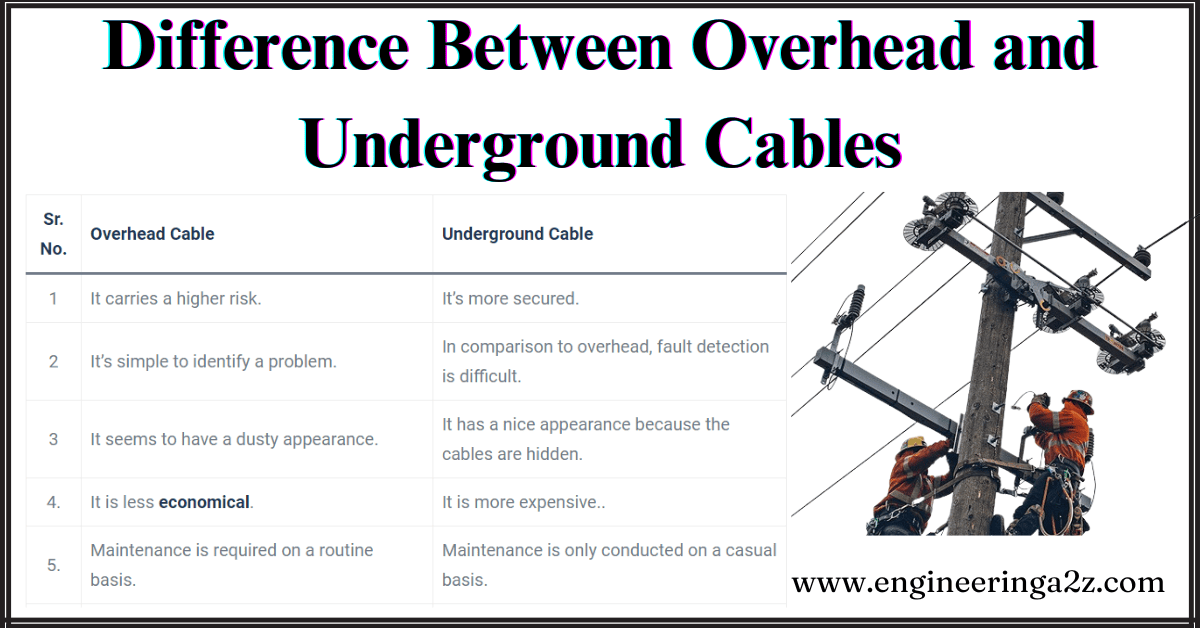| 1 | It carries a higher risk. | It’s more secured. |
| 2 | It’s simple to identify a problem. | In comparison to overhead, fault detection is difficult. |
| 3 | It seems to have a dusty appearance. | It has a nice appearance because the cables are hidden. |
| 4. | It is less economical. | It is more expensive.. |
| 5. | Maintenance is required on a routine basis. | Maintenance is only conducted on a casual basis. |
| 6. | Accidents seem to be more frequent. | There are very few chances of an accident. |
| 7. | It seems to have a voltage level of 400 kv. | Due to the difficulty in shielding it, it can only work at 66 kv. |
| 8. | In comparison, the cost of erection is much lower. | The cost of erecting a high-voltage cable is quite huge. |
| 9. | This is for long-distance connections. | Long-distance transmission is restricted by the high charging current at high voltage. |
| 10. | Falling trees and other things have an effect on the line. | There is really no chance. |
| 11. | The current carrying capacity of an overhead line is greater than that of an underground cable. | In comparison to an overhead line, an underground cable has a lower current carrying capacity. |
| 12. | It needs less insulation. | It needs extra insulation. |
| 13. | Overhead lines are unaffected by the proximity effect. | The underground wires are affected by the proximity effect. |
| 14. | The overhead system seems to have a Corona effect. | The underground system does not have the Corona effect. |












Leave a Reply